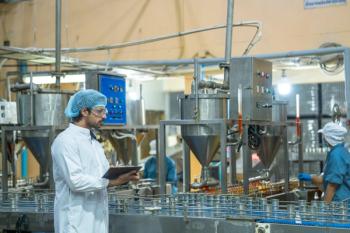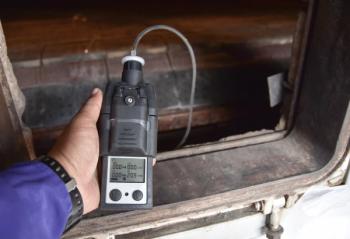
New Study Shows FT-MIR Spectroscopy Can Authenticate Parmigiano Reggiano Farming Practices
A new study published in the Journal of Dairy Science demonstrates that FT-MIR spectroscopy can effectively authenticate farming practices and dairy systems in Parmigiano Reggiano production but has limited ability to verify animal welfare parameters.
Researchers from Italy recently published a study that showcased the utility of using Fourier transform mid-infrared (FT-MIR) spectroscopy to authenticate farming practices and dairy systems. In the study published in the Journal of Dairy Science, Diana Giannuzzi from the University of Padova and her team used FT-MIR spectroscopy to analyze milk samples from approximately 1,000 farms in northern Italy (1). Their main objective of the study was to determine whether FT-MIR spectroscopy could verify factors such as feeding methods, genetic type of dairy herds, and housing systems, variables that impact dairy production (1).
Food authenticity is a hot topic in food and beverage analysis, and spectroscopic techniques are being applied to ensure high-quality food products are entering the global market for consumers (2,3). FT-MIR spectroscopy has been used in previous studies to analyze the quality of milk (1,4). This study builds on that research by using FT-MIR to test dairy-producing systems.
Giannuzzi and her team compiled a data set containing 12,083 FT-MIR spectra records from 949 farms participating in the Parmigiano Reggiano Consortium (1). These farms were categorized into five distinct dairy systems: two traditional systems (located in the Apennines or the Po Plain), two modern systems (one using a total mixed ration [TMR] feeding system and one not), and a traditional system rearing local breeds (1).
Data on animal welfare using the Italian National Reference Center for Animal Welfare (CReNBA) protocol was also collected as part of the experimental procedure, and bulk milk test-day data was obtained from the Breeders Association of the Emilia Romagna Region (1). This comprehensive data set allowed the researchers to evaluate the ability of FT-MIR to distinguish different farming practices based on milk composition.
The researchers applied two statistical models, analysis of variance (ANOVA) and a 10-iteration linear discriminant analysis (LDA), to assess how well FT-MIR could differentiate between the five dairy systems. The results showed that the dairy system had a significant effect on milk composition (1).
By using FT-MIR spectroscopy, the researchers demonstrated strong authentication performance for genetic type (area under the receiver operating characteristic curve [AUC] of 0.98), housing system (0.91), and feeding system (0.89) (1). As a result, the researchers concluded that these high AUC values suggest that milk composition changes significantly based on these factors, making FT-MIR a viable tool for verifying them. However, its ability to differentiate geographical regions was moderate (AUC of 0.70), and its performance in identifying the percentage of concentrate in the diet and animal welfare parameters was lower (AUC between 0.57 and 0.64) (1).
Interestingly, when dairy systems were grouped into just two categories—traditional versus modern—FT-MIR achieved an AUC of 0.89, indicating that it is more effective in distinguishing broader differences rather than highly specific classifications.
The results demonstrate that FT-MIR spectroscopy has potential in certifying dairy systems, particularly for Parmigiano Reggiano (1). Because FT-MIR is already widely used in milk quality monitoring, its integration into authentication processes could help lessen the cost burden on analysts and researchers, allowing them to use one technique for several purposes.
That being said, the researchers make clear that the reliability of FT-MIR spectroscopy is dependent on the extent to which farming practices influence milk composition (1). They conclude that if differences between systems are too subtle, the technique may struggle to differentiate them accurately (1).
The ability to authenticate Parmigiano Reggiano production practices is particularly relevant as consumers increasingly seek transparency and assurance regarding the origins of dairy products. This study provides a scientific basis for using FT-MIR spectroscopy as a tool to support certification efforts and maintain consumer trust in high-quality dairy products.
References
- Mauricio, M. A. R.; Berton, M.; Amalfitano, N.; et al. Leveraging milk mid-infrared spectroscopy to authenticate animal welfare, farming practices, and dairy systems of Parmigiano Reggiano cheese. J. Dairy Sci. 2025, 108 (3), 2642–2657. DOI:
10.3168/jds.2024-25466 - Xu, X.; Xiao, W.; Cao, Y.; Zhang, Z. Identification of Different Dairy Products Using Raman Spectroscopy Combined with Fused Lasso Distributionally Robust Logistic Regression. Spectroscopy 2025, 40 (1), 20–25. DOI:
10.56530/spectroscopy.sl5185z2 - Wetzel, W. Verifying Meat Origins Using Visible and Near-Infrared Spectroscopy. Spectroscopy. Available at:
https://www.spectroscopyonline.com/view/verifying-meat-origins-using-visible-and-near-infrared-spectroscopy (accessed 2025-03-11). - Yao, Z.; Zhang, X.; Nie, P.; et al. Identification of Milk Adulteration in Camel Milk Using FT-Mid-Infrared Spectroscopy and Machine Learning Models. Foods 2023, 12 (24), 4517. DOI:
10.3390/foods12244517
Newsletter
Get essential updates on the latest spectroscopy technologies, regulatory standards, and best practices—subscribe today to Spectroscopy.





